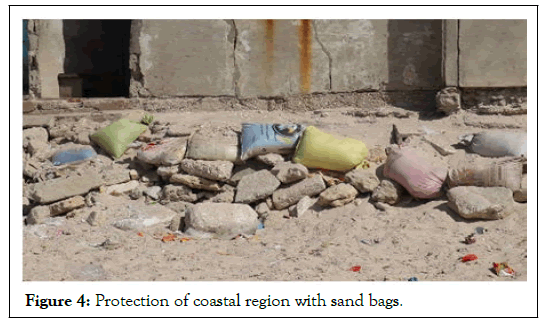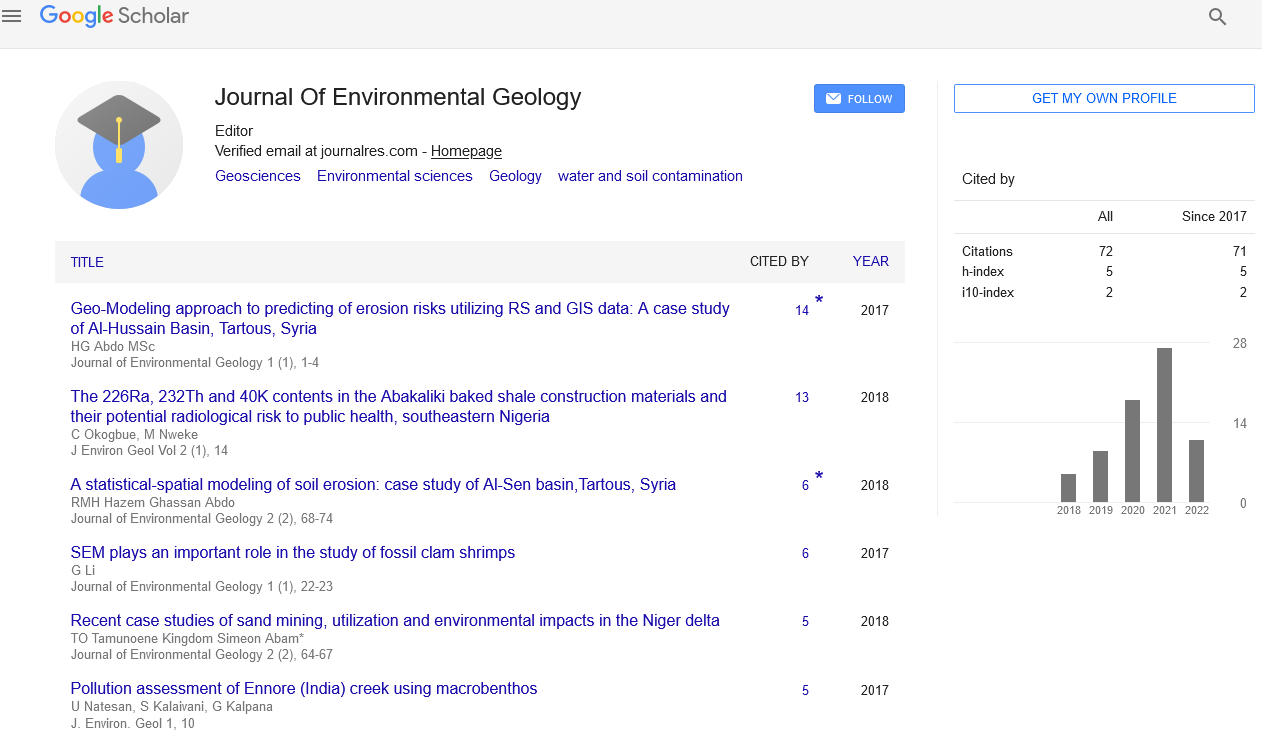Bargny, the silent ordeal of victims of coastal erosion
Received: 03-Feb-2023, Manuscript No. PULJEG-23-6138; Editor assigned: 06-Feb-2023, Pre QC No. PULJEG-23-6138 (PQ); Reviewed: 21-Feb-2023 QC No. PULJEG-23-6138; Revised: 04-Apr-2023, Manuscript No. PULJEG-23-6138 (R); Published: 12-Apr-2023
Citation: Kouton IL. Bargny, the silent ordeal of victims of coastal erosion. J Environ Geol 2023;7(1):1-2.
This open-access article is distributed under the terms of the Creative Commons Attribution Non-Commercial License (CC BY-NC) (http://creativecommons.org/licenses/by-nc/4.0/), which permits reuse, distribution and reproduction of the article, provided that the original work is properly cited and the reuse is restricted to noncommercial purposes. For commercial reuse, contact reprints@pulsus.com
Introduction
Coastal erosion continues to cause damage in some localities of Dakar in Senegal. After having vainly used the means on board to try to slow down the advance of the sea, the populations and authorities of the municipality of Bargny seem to be resigned to its fury.
Bargny, a locality located about thirty kilometers from Dakar in Senegal, has been experiencing a drama for several decades which is still taking its course. In the Bargny Gueye district, the consequences are clearly visible. Homes are in ruins, cemeteries and mosques washed away by the sea. Sheikh Fadel Wade is the coordinator of the platform of actors for climate justice. He explains to us that “the advance of the sea in his town is due to global warming”. We are here and the sea continues to do damage. A few years ago, sea level was so far away, he continues. "There are mosques, cemeteries, playgrounds, concessions where people lived who are swallowed up by the sea," he complains. The sexagenarian adds that nearly a hundred meters of land have disappeared under water since the 1970’s.
Description
The overcrowding caused by the loss of houses devastated by the sea is the cause of many illnesses, tells us Saliou Mbengue, a young elected municipal official and volunteer for the defense of the climate. “Since the houses started being destroyed, families of 10 or 15 people live in one room and it causes disease here,” he concludes with an annoyed air (Figures 1 and 2).
Illegal immigration, another consequence of coastal erosion
Apart from the visible consequences on site, coastal erosion also contributes to the depletion of fishery resources in Bargny. But here, about 75% of the seventy thousand inhabitants derive their income from fishing or fishing related activities. This situation pushes the young people of Bargny to choose illegal immigration, even at the risk of their lives.
According to Ndeye Astou, resident of this commune, it was easy to have fish on the coasts of Bargny. But today, she continues, our children go as far as Casamance (located more than 450 km from Bargny) without finding any fish. This is what drives our young children to attempt the crossing to Europe, she adds.
The inaction of the authorities
At the town hall of Bargny, the authorities are aware of the danger. “We are hit by increased coastal erosion,” admits Babacra Seck, chairman of the municipality's environmental commission. Two solutions are available to us for the resolution of this problem. The first is to relocate the people concerned elsewhere. We are thinking about getting this done. The second solution is the construction of infrastructures such as protective dykes and breakwaters. “But it is enormously expensive and to tell you the truth, the town hall does not have these means” he suggests (Figures 3 and 4).
Faced with the passivity of the authorities, the local populations try to protect themselves with the means at hand.
Conclusion
Used tires, nets and bags filled with sand are piled up here and there to try to slow down the effect of the waves: Very precarious solutions which give a glimpse of the despair of the bargninois who live in silence the drama of coastal erosion. Since many decades.









